5 Oct 2015
What might a Transition response to the refugee crisis look like?
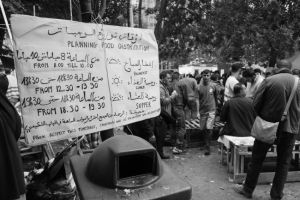
It’s a question many people are asking, and it’s one that was discussed at the Transition Network conference a couple of weeks ago. While there is no definitive answer, and the response will look different in each place, I thought you might be inspired to hear the story I recently heard when I visited Brussels. I visited members of 1000 Bruxelles en Transition to see their amazing Potager Alhambra, of which more next month. While I was there, one of the group, Julien Bernard, told me the amazing story of a spontaneous refugee camp that many of the Transitioners were central in initiating. Although not formally a 1000 Bruxelles en Transition project, it captures beautifully one example of what a response to the migrant crisis might look like if underpinned by Transition thinking. Here’s the conversation we had, standing in the Potager (it is transcribed below if you’d prefer to read it).
“Me and other citizens were some of the first to get mobilised for the refugee camp. From the end of August the number of refugees coming into Brussels became much larger and they needed to go to this government building to register and request asylum. The government policy is that they process a certain number of people per day, and they didn’t increase capacity for processing when the number of refugees started becoming larger. People saw themselves forced to stay in this park which is just in front of this government building while waiting for their turn to be processed.
The first days were pretty chaotic because there was nothing prepared to receive anyone. The refugees slept in the park, but there were no tents, there was nothing prepared. The first citizens came in to give them soup, and people quickly mobilised to provide a wider range of support. So in the first few days we had piles of food in one corner and donations in another.
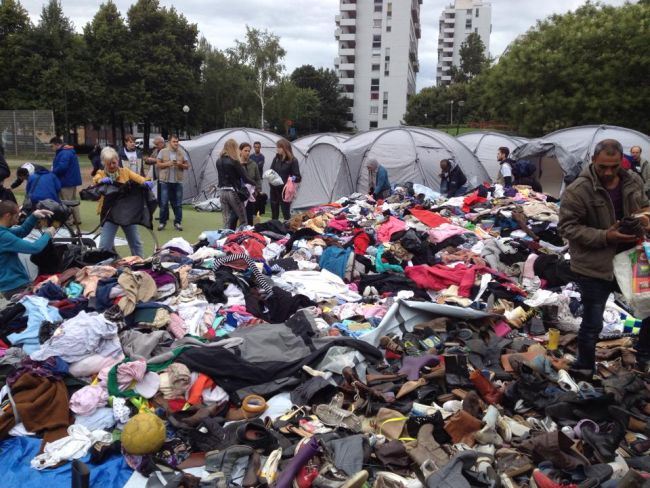
Gradually the help started getting more structured and different groups of people came to take care of different tasks. After the first week there were 200 people in the camp and 100 volunteers. 20 days later there was this big general assembly with about 1000 people, refugees and volunteers, to try and create a more structured support. After that assembly meeting, we created different working groups with different tasks and it became a lot more organised.
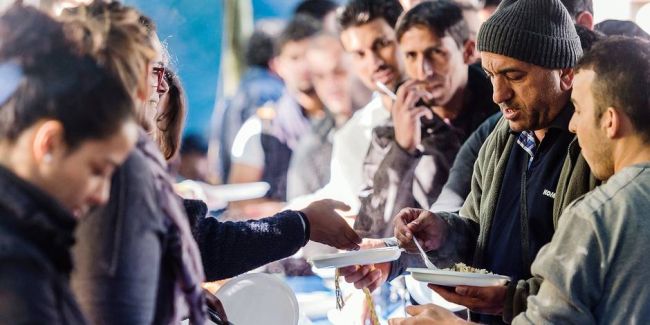
Each working group started working more or less autonomously while keeping the other groups informed about what they were doing. After a while there were about 1000 refugees in the camp. There was also a huge mobilisation of people everywhere, not the volunteers in the camp but people who gave donations. After a few weeks there were tons of donations of food and clothes and tents and materials. The volunteers built a huge kitchen that serves 3 meals to 1000 people every day and there was a non-government organisation that came in also to help with medical care.
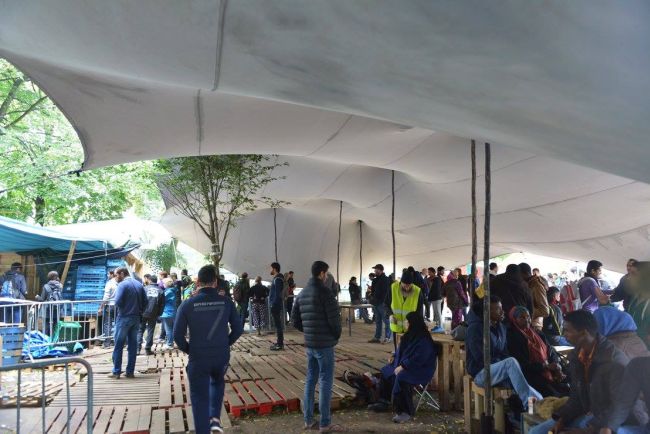
The camp is managed by these volunteers day and night and this citizen mobilisation was done in spite of our government, it wasn’t very reactive and didn’t do much to receive refugees. Due to this citizen mobilisation, the government was finally pressured into opening up a few spots to receive refugees through this transition period while they are waiting to be processed. There are still not enough of those places, so there are still people staying in the camp, but it was still a big political shift.
That political shift, what did that look like? Presumably, it went from a place where the government was saying no, no, no. How did this action start to change government thinking?
One of the main things was that the action was prolonged in time so we didn’t get weaker and people didn’t go away. The problem was still visible. Also that the whole presence of the volunteers was done in the spirit of positive communication of seeking solutions and the movement remained non-partisan, non-political. Last time there was a gigantic citizens’ march, not a protest, but just a march of solidarity with the refugees, where about 25,000 people took part.
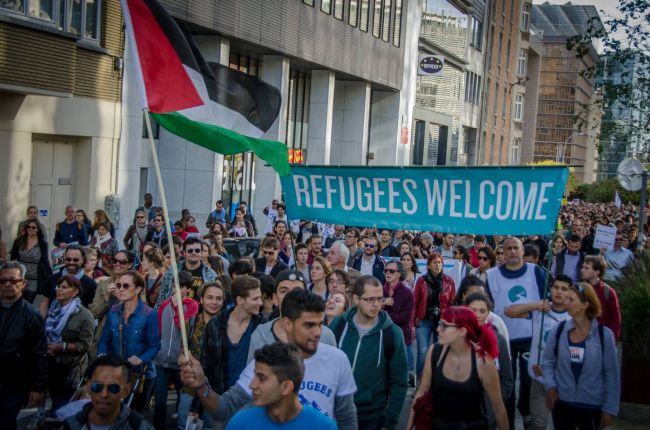
Could you say a bit about the role of Transition Bruxelles?
This is not a project from the Brussels Transition Group, but several people from the Transition Group took part from the beginning. A lot of people who came to help are part of organisations who share this view of positive solutions and action.
I think the thing that made this refugee camp work was that we applied ourselves to it with the same mentality that we do the Transition projects. We had a positive mindset, we focused on getting concrete results, and looked for concrete solutions. Everyone took pleasure in seeing how it evolved and seeing it work and it gave everyone a feeling that they could actually change things and make it work.
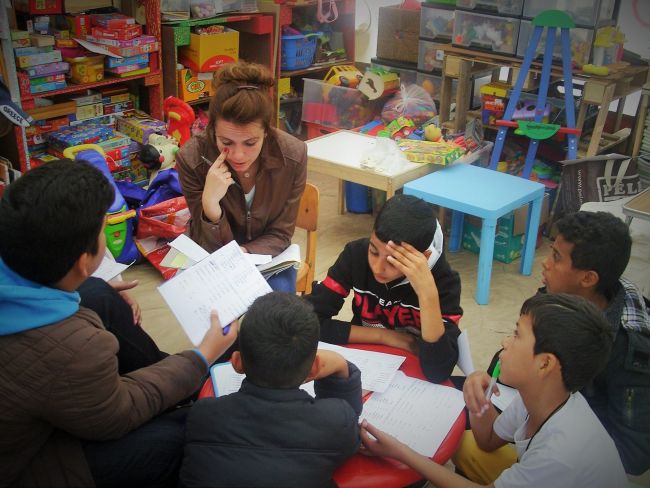
Everything in the camp was built using recovered and reused materials, so there was absolutely no budget. The group doesn’t even have a bank account, so it was just donations and reused materials. The other thing that happened is that this served as an opportunity for many people to become active citizens, whereas in other situations we tend to be quite passive. There was a mental click that showed people that they can be active and they can have an influence. This ended up mobilising thousands of people who might have had that mental click and might be using it.
Here is a film from Al Jazeera about it:
How is your Transition group responding? Do you have a story to share? Please use the comments box below.